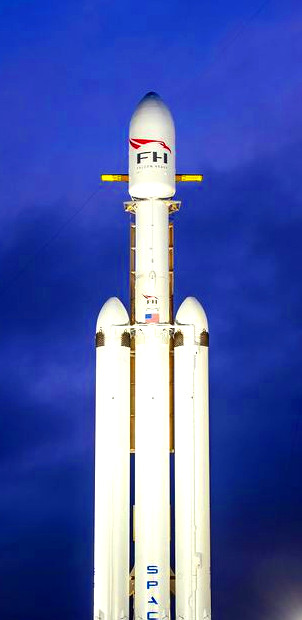New weather tech looms
 A major rocket launch this week sent 24 new satellites into space, including some for Australia’s Bureau of Meteorology (BoM).
A major rocket launch this week sent 24 new satellites into space, including some for Australia’s Bureau of Meteorology (BoM).
A SpaceX Falcon Heavy rocket took off from Launch Pad 39A at Kennedy Space Center (KSC) overnight, marking the Falcon Heavy’s first flight at night and third launch overall.
The launch was successful, and the ship was able to inject its payload of two dozen satellites into three different orbital paths within a few hours of leaving Earth.
The eyes of the science world were on the launch, especially in Australia, as the launch hoisted the COSMIC-2 set of six satellites into orbit.
The COSMIC-2 array is designed to improve weather forecasts and space weather monitoring, delivering data to the BoM for better storm forecasting, especially in warm, tropical areas near the equator.
Bureau of Meteorology Chief Data Officer Dr Anthony Rea says the Bureau is pleased to be playing a role in the international effort.
“The Bureau has a large network of ground stations from which we can send and receive signals from satellites. This enables us to make a valuable contribution to international space missions, such as COSMIC-2,” he said.
“In the case of COSMIC-2 we will be sending commands to the satellites as well as downlinking real-time data.”
Each COSMIC-2 satellite, roughly the size of a standard kitchen oven, carries a precision GPS receiver that allows us to determine atmospheric density, temperature, pressure and moisture.
They also carry three instruments that detect electron density and other space weather information in the ionosphere, as a secondary payload.
Unlike the first COSMIC mission, launched in 2006 with its satellites orbiting the Earth in nearly polar orbits, the COSMIC-2 satellites will orbit Earth near the equator, taking measurements of the tropics and subtropics, and monitoring the ionosphere for the effects of solar storms.
Using a technique called radio occultation, the COSMIC-2 satellites will collect signals from the Global Navigation Satellite System, (including GPS) that are “bent” as they travel through the Earth’s atmosphere.
The bent signal gives scientists an indication of the temperature, pressure and moisture content of the atmosphere. Data from radio occultation helps to create more accurate weather forecasts.
As part of the mission, SpaceX successfully landed two of the megarocket's three first-stage boosters.
The two side boosters touched down at Cape Canaveral Air Force Station, while the central core booster narrowly missed its target — SpaceX's drone ship ‘Of Course I Still Love You’, which was stationed hundreds of miles off the Florida coast.
SpaceX said before the launch that the landing of the core booster would be the most difficult of the dozens that Falcon 9 and Falcon Heavy first stages have attempted over the past few years.
This was because the mission required higher-than-normal speeds, and to make it extra challenging, the company stationed ‘Of Course I Still Love You’ twice as far from shore as it normally is during sea-landing attempts.
Footage of the launch and rocket touchdowns can be seen below.







 Print
Print